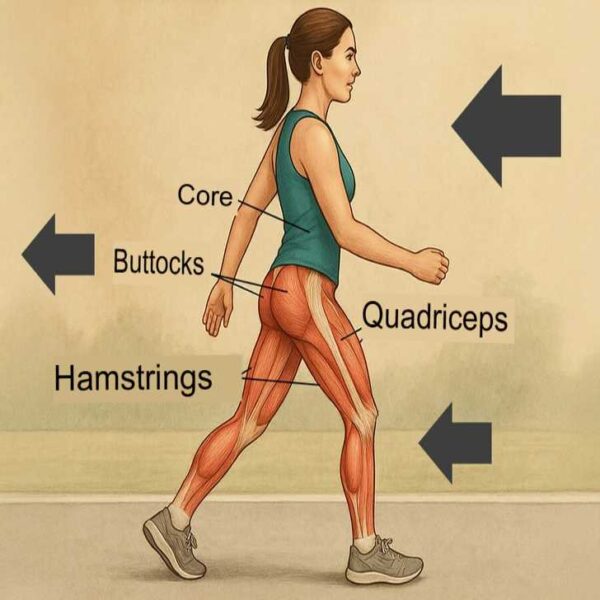10 Surprising Benefits of Walking Backward and Why You Should Give It a Try
While walking forward is second nature to most of us, walking backward—also known as retro walking—offers a host of health benefits that are often overlooked. Incorporating this simple yet effective exercise into your routine can lead to improved physical and mental well-being.
1. Activates Different Muscle Groups

Backward walking engages muscles that aren’t as active during forward walking. It strengthens the glutes, quadriceps, tibialis anterior (front of the shin), and core muscles, providing a more comprehensive lower-body workout.
2. Boosts Cardiovascular Health
This unconventional movement challenges the heart and lungs more than regular walking. Studies have shown that walking backward can improve cardiorespiratory fitness, enhancing oxygen efficiency and heart function over time.
3. Eases Chronic Knee Pain
For those suffering from knee discomfort, especially due to osteoarthritis, walking backward can be beneficial. It strengthens thigh muscles like the quadriceps without putting excessive pressure on the knee joint, leading to reduced pain and improved mobility.
4. Increases Flexibility and Mobility
The motion of walking backward gently stretches and engages the hamstrings and calves, making it an excellent way to naturally improve flexibility. Regular practice can lead to significant improvements in lower-body mobility.
5. Improves Posture

Backward walking encourages a more upright posture. It requires balance and awareness, which helps in standing taller and engaging the core more effectively, leading to better spinal alignment.
6. Enhances Balance, Coordination, and Gait
This activity demands more focus and coordination, which can improve overall balance and gait stability. It’s particularly beneficial for individuals recovering from injuries or those looking to enhance their neuromuscular control.
7. Burns More Calories Than Forward Walking
Due to the increased effort required, walking backward burns more calories than regular walking. This makes it an efficient exercise for those looking to boost their calorie expenditure.
8. Relieves Back Pain

Walking backward has been shown to activate lumbar extensor muscles more effectively than forward walking, helping to alleviate lower back pain. It also stretches tight hamstrings, which are often associated with back discomfort.
9. Stimulates Brain Activity
Engaging in backward walking requires more concentration and coordination, stimulating areas of the brain associated with problem-solving and decision-making. This can enhance cognitive function and mental sharpness.
10. Low-Impact and Accessible
Retro walking is a low-impact exercise, making it suitable for individuals of all ages and fitness levels. It’s an accessible activity that can be performed anywhere, from parks to treadmills.Cleveland Clinic
How to Incorporate Backward Walking into Your Routine:
- Start Slowly: Begin with short distances or durations, such as 5–10 minutes, and gradually increase as you become more comfortable.
- Choose Safe Environments: Opt for flat, obstacle-free areas to minimize the risk of tripping.Verywell Health
- Use Support: Initially, consider using handrails or a partner for balance until you gain confidence.
- Combine with Forward Walking: Alternate between forward and backward walking to create a balanced workout.